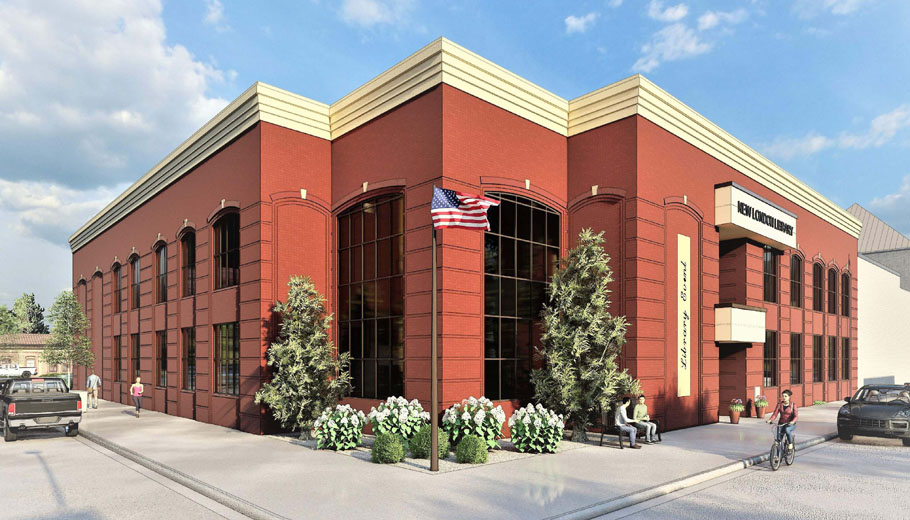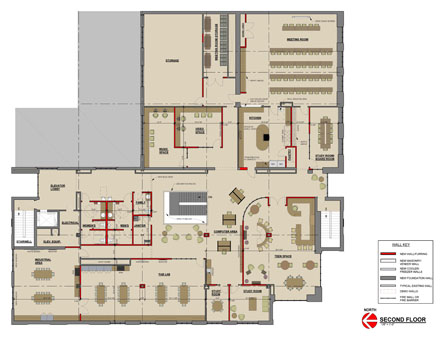
New London Common Council approves $500,000 for project
By Robert Cloud
The New London Common Council approved resolutions when it met Wednesday, Aug. 31, to move the library project forward.
The council voted to commit $500,000 toward the project’s cost.
It also agreed to work with the Library and Museum Board through a joint task force to develop a request for proposals to develop property where the new annex had been planned.
Prior to First State Bank donating its former office building to the library, the library had purchased property across the street from its existing building using donated funds.
Proceeds from the sale of that property will go toward the new library project.
Both council and board will need to approve which development the goes on the property.
The city is interested in any development’s potential tax revenues, because the parcel is located in a TIF district. That means the city captures all new property tax revenues, including those that would normally go to the school district or the county, to help pay for development in the district.
The library board is interested in using the sale to generate revenues for the new library project. Since the property was donated, the board believes its sale should be considered a donation as well.
Design, costs

Before the council meeting, council members met as a committee of the whole and listened to presentations about the project and its costs.
Devin Flanigan, a project manager with Keller Inc., talked about the project’s estimated costs.
Both the existing library and the annex will fit on two stories of the bank building, according to Flanigan.
“To have everything in one building is just a phenomenal set up,” Flanigan said.
He said everything that is in the current library will now go on the first floor of the renovated bank building.
This includes all the books and materials that are circulated through the library.
“Everything that was planned for the annex across the street would be going on the second floor,” Flanigan said.
The second floor will have large and small meeting rooms, a kitchen, a fab lab, industrial space, computer lab, teen space and study rooms.
Flanigan said the interior walls will need to be demolished so that the space is reconfigured for a library instead of offices.
Interior demolition is estimated at $42,000. Concrete demolition, which will be needed when a third set of stairs is installed near the center of the building, is estimated at $7,900.
Construction of the new stairwell is estimated at $32,000 for the foundation, $5,900 for the flatwork, $70,000 for the steel structure, $24,000 for the railings. Including the concrete demolition, the new stairs will cost about $140,000.
Carpentry on the project is estimated at $275,300, drywall at $113,000, acoustic ceiling at $84,500, flooring at $400,000, painting and finishing at $69,500, new casework at $185,000, new sprinklers required by code at $81,200, new restrooms and upgrades required by code at $40,000, new plumbing at $40,000, a new entry facade with canopy at $30,000, and aluminum storefronts and windows at $36,500.
Keller’s goal is to re-use the existing heating and air conditioning units at a cost of $500,000. However, Flanigan noted that changing how the building is used will pose challenges for the current HVAC system.
He said a new system would be more energy efficient and a better long-term solution since everything would be upgraded. A new HVAC system would cost an estimated $650,000.
Flanigan also recommended replacing the building’s electrical system.
He noted that reusing panels and switch gears will void existing warranties. Also, due to the age of existing equipment, the electrical contractor may need to replace it with used equipment with no warranty.
Keller budgeted $500,000 for electrical.
Because the costs are estimated, Keller set aside $250,000 for contingencies.
Including architectural and management fees, bonding, insurance and miscellaneous costs, the total project is estimated at $3.7-$3.8 million.
Virginia Schlais, president of the library board, told the committee that the library has raised nearly $2.6 million in pledges toward the project, with $1.2 million “in the bank.”
